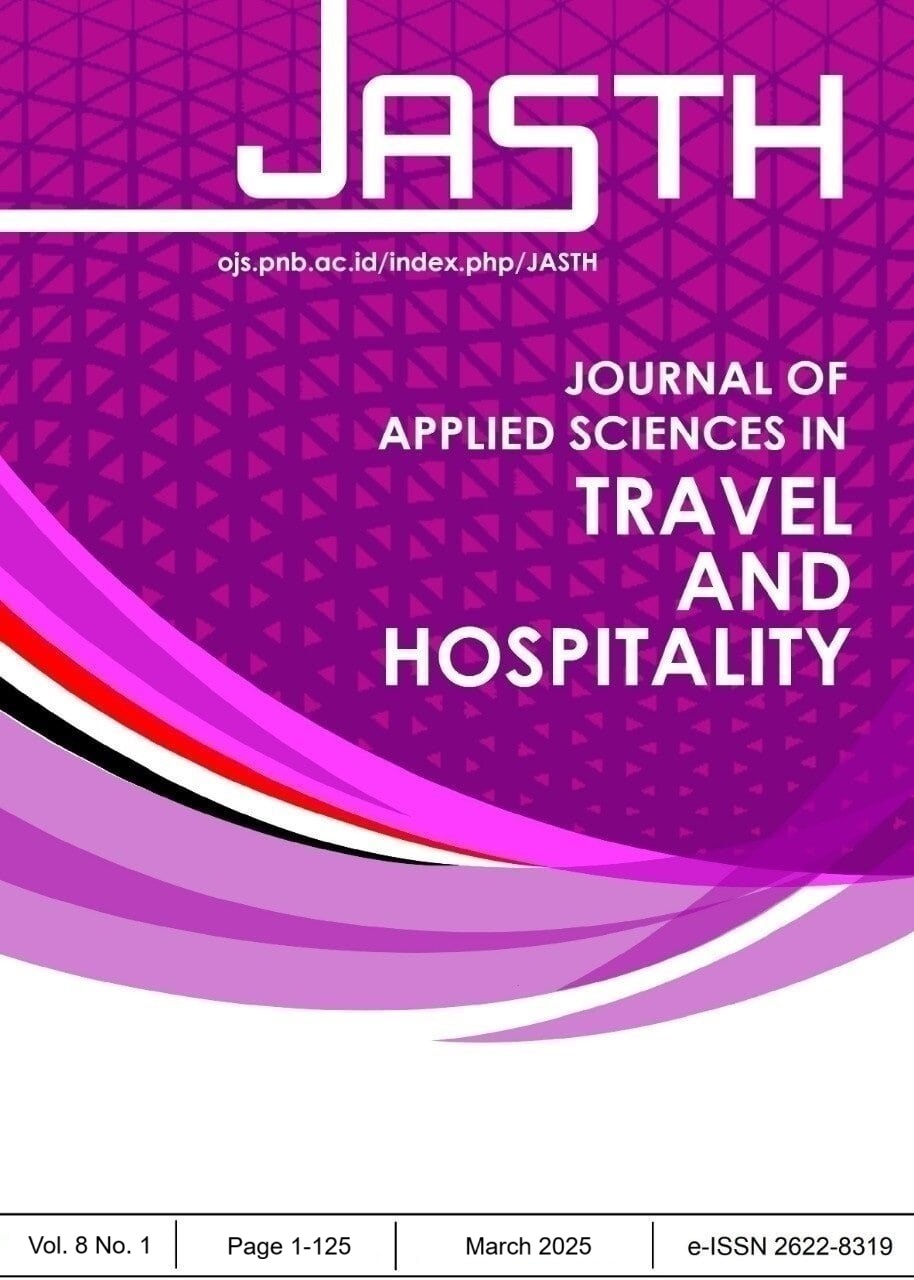Utilizing social network analysis for the advancement of rural tourism
DOI:
https://doi.org/10.31940/jasth.v8i1.96-109Keywords:
community based tourism, rural tourism, social network analysis, triple helix modelAbstract
Implementing Community-Based Tourism (CBT) can create employment opportunities and enhance regional competitiveness. Economic, social, and environmental conflicts sometimes follow the success of CBT. Social networks can drive the success of CBT, reduce conflict, and promote tourism sustainability. This study aims to analyze social networks to strengthen rural tourism. The research was carried out in the Carocok Tourism destination, a leading Pesisir Selatan Regency tourism destination—data collection through observation and FGD with five experts. Primary data were collected from 39 business units that were selected purposively. The variables observed were tourism asset ownership, asset control, capacity, and benefits. The data was analyzed using the Social network analysis (SNA) approach with Nvivo 12 plus and Gephi 0.9.5 software. The study's findings show that the social network pattern in the Carocok mirrors a triple helix model. This model involves three key stakeholders: the government, the community, and the private sector. Tourism management resembles community-based tourism as it emphasizes the community as the primary stakeholder, with the community owning 89.27% of tourism assets, a more significant share than the government and private ownership. While the community broadly owns these assets, there is still room for more robust control and improvement in the capacity of tourism labor. Conflicts were found in rural tourism activities, such as developing tourism infrastructure that impacted the ecological damage of coastal areas, privatization of public spaces, inconsistencies in tourism product tariffs, illegal levies, and misunderstandings of governance between the government and local communities. Some of the problems are related to the lack of control and capacity owned by the community in the tourism sector. The government and the private sector play significant roles in enhancing capacity building and fostering entrepreneurship. Developing tourism will require media and academic collaboration to improve tourism in the future.












